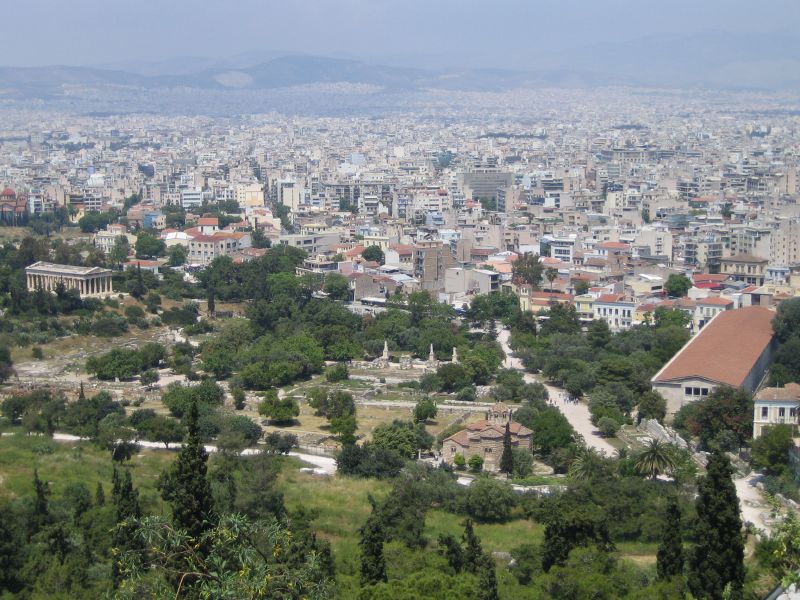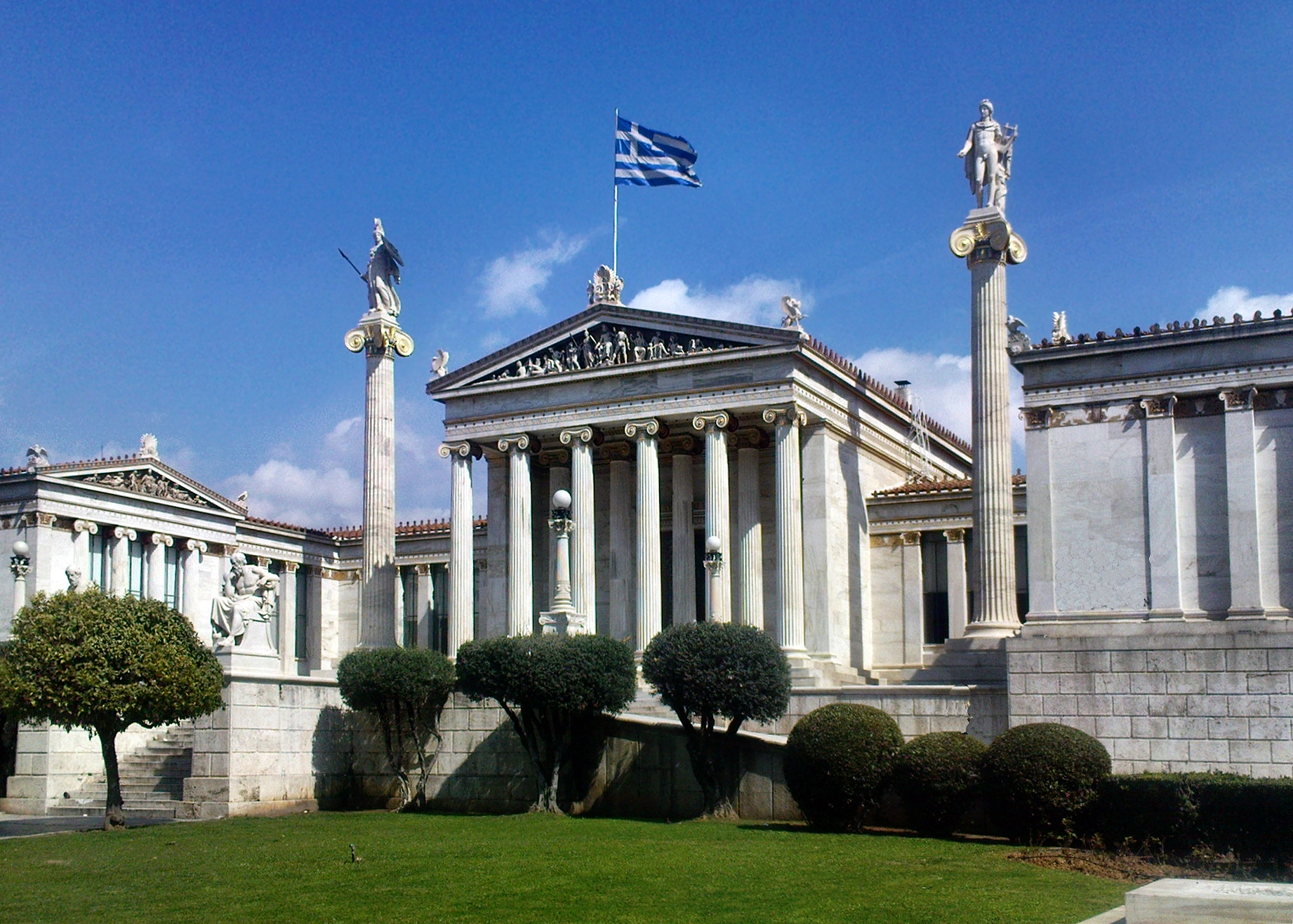|
Lesis
Lesis was an Ancient Greek slave from Classical Athens. In 1972, during an excavation in the Ancient Agora of Athens, near Stoa Basileios, a lead tablet from the 4th century BC was discovered. The tablet was a letter by Lesis, who wrote: The letter was written for Xenokles, his master, and his mother. He is one of few recorded literate slaves in Ancient Greece. Scholar David R. Jordan placed doubts that Lesis was actually a slave; arguing that he was an apprentice, and his mother put him under supervision of the foundry owner to teach metalworking Metalworking is the process of shaping and reshaping metals in order to create useful objects, parts, assemblies, and large scale structures. As a term, it covers a wide and diverse range of processes, skills, and tools for producing objects on e .... References Ancient Greek slaves and freedmen 4th-century BC Greek writers {{AncientGreece-bio-stub ... [...More Info...] [...Related Items...] OR: [Wikipedia] [Google] [Baidu] |
Ancient Agora Of Athens
The ancient Agora of Athens (also called the Classical Agora) is an ancient Greek agora. It is located to the northwest of the Acropolis, and bounded on the south by the hill of the Areopagus and on the west by the hill known as the Agoraios Kolonos, also called Market Hill. The Agora's initial use was for a commercial, assembly, or residential gathering place. Buildings and structures of the classical agora North side of the agora * Stoa Poikile (Painted stoa), a building built in the 5th century B.C. used purely for socialising unlike many other buildings in the agora. * Altar of the Twelve Gods * Stoa Basileios (Royal stoa) * Temple of Aphrodite Urania *The south end of what is believed to be a Basilica has been uncovered near Hadrian Street and is dated to the mid 100s C.E. East side of the agora * The Stoa of Attalos, a stoa lined with shops built in the 2nd century B.C. which has since been reconstructed for use as the Museum of The Ancient Agora. * The Square ... [...More Info...] [...Related Items...] OR: [Wikipedia] [Google] [Baidu] |
Stoa Basileios
Stoa Basileios (), meaning Royal Stoa, was a Doric order, Doric stoa in the northwestern corner of the Athenian Agora, which was built in the 6th century BC, substantially altered in the 5th century BC, and then carefully preserved until the mid-second century AD. It is among the smallest known Greek stoas, but had great symbolic significance as the seat of the Athenian King Archon, repository of Athens' laws, and site of "the stone" on which incoming magistrates swore their oath of office. Description The stoa was in the northwest corner of the Ancient Agora of Athens, Athenian Agora, an area known in ancient times as "the Herms" because of the great number of Herma, herms set up there (fragments of 19 of these herms have been found). It sat just south of the point where the Panathenaic Way and another street enter the Agora and exactly one metre north of the Stoa of Zeus. The identification of the archaeological remains with the Stoa Basileios known from literary sources is clear ... [...More Info...] [...Related Items...] OR: [Wikipedia] [Google] [Baidu] |
Ancient Greece
Ancient Greece () was a northeastern Mediterranean civilization, existing from the Greek Dark Ages of the 12th–9th centuries BC to the end of classical antiquity (), that comprised a loose collection of culturally and linguistically related city-states and communities. Prior to the Roman period, most of these regions were officially unified only once under the Kingdom of Macedon from 338 to 323 BC. In Western history, the era of classical antiquity was immediately followed by the Early Middle Ages and the Byzantine period. Three centuries after the decline of Mycenaean Greece during the Bronze Age collapse, Greek urban poleis began to form in the 8th century BC, ushering in the Archaic period and the colonization of the Mediterranean Basin. This was followed by the age of Classical Greece, from the Greco-Persian Wars to the death of Alexander the Great in 323 BC, and which included the Golden Age of Athens and the Peloponnesian War. The u ... [...More Info...] [...Related Items...] OR: [Wikipedia] [Google] [Baidu] |
Classical Athens
The city of Athens (, ''Athênai'' ; Modern Greek: Αθήναι, ''Athine'' ) during the classical period of ancient Greece (480–323 BC) was the major urban centre of the notable '' polis'' ( city-state) of the same name, located in Attica, Greece, leading the Delian League in the Peloponnesian War against Sparta and the Peloponnesian League. Athenian democracy was established in 508 BC under Cleisthenes following the tyranny of Isagoras. This system remained remarkably stable, and with a few brief interruptions, it remained in place for 180 years, until 322 BC (aftermath of Lamian War). The peak of Athenian hegemony was achieved in the 440s to 430s BC, known as the Age of Pericles. In the classical period, Athens was a centre for the arts, learning, and philosophy, the home of Plato's Academy and Aristotle's Lyceum, Athens was also the birthplace of Socrates, Plato, Pericles, Aristophanes, Sophocles, and many other prominent philosophers, writers, and politici ... [...More Info...] [...Related Items...] OR: [Wikipedia] [Google] [Baidu] |
Metalworking
Metalworking is the process of shaping and reshaping metals in order to create useful objects, parts, assemblies, and large scale structures. As a term, it covers a wide and diverse range of processes, skills, and tools for producing objects on every scale: from huge ships, buildings, and bridges, down to precise engine parts and delicate jewellery. The historical roots of metalworking predate recorded history; its use spans cultures, civilizations and millennia. It has evolved from shaping soft, native metals like gold with simple hand tools, through the smelting of ores and hot forging of harder metals like iron, up to and including highly technical modern processes such as machining and welding. It has been used as an industry, a driver of trade, individual hobbies, and in the creation of art; it can be regarded as both a science and a craft. Modern metalworking processes, though diverse and specialized, can be categorized into one of three broad areas known as forming, cutt ... [...More Info...] [...Related Items...] OR: [Wikipedia] [Google] [Baidu] |
Ancient Greek Slaves And Freedmen
Ancient history is a time period from the beginning of writing and recorded human history through late antiquity. The span of recorded history is roughly 5,000 years, beginning with the development of Sumerian cuneiform script. Ancient history covers all continents inhabited by humans in the period 3000 BCAD 500, ending with the expansion of Islam in late antiquity. The three-age system periodises ancient history into the Stone Age, the Bronze Age, and the Iron Age, with recorded history generally considered to begin with the Bronze Age. The start and end of the three ages vary between world regions. In many regions the Bronze Age is generally considered to begin a few centuries prior to 3000 BC, while the end of the Iron Age varies from the early first millennium BC in some regions to the late first millennium AD in others. During the time period of ancient history, the world population was exponentially increasing due to the Neolithic Revolution, which was in full progr ... [...More Info...] [...Related Items...] OR: [Wikipedia] [Google] [Baidu] |





